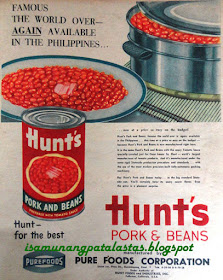 |
| EDDIE GARCIA, at age 49,"the greatest Filipino actor of all time", 1978 |
The character actor was initially known for his villainous
portrayals, but through the years, these have come to include gay, father, grandfather,
superhero, kitschy and other offbeat roles. Garcia’s
last appearances before his untimely death in a filming accident were in “Hintayan ng Langit” and “Rainbow’s Sunset” (2018).
WATCH ANDY PLAYER SPECIAL AD
with EDDIE GARCIA, ca. 1985
(youtube upload: aianchan)
Later in his career, Garcia
found fame starring in TV programs including Little Nanay (2015–2016) and Ang Probinsyano (2016–2019). He is the
only one to be inducted in three categories in the FAMAS Hall of Fame: for Best
Actor, Best Supporting Actor, and Best Director, and the only Filipino to win
the Asian Film Award for Best Actor.
WATCH BEER NA BEER TVC
with EDDIE GARCIA, ca. 1990s.
(youtube upload: Commercial Muna!)
It was only at this stage in his life that advertisers
took note of his appeal and pulling power. Garcia
did a few commercials, like the ones you see on this spread. You can see why Eddie Garcia was widely revered as the "greatest Filipino
actor of all time".
WATCH BENCH TVC #lovelocalsuperstitions
with EDDIE GARCIA HERE:
(youtube upload: Benchingko/Films)
1985 Andy Player Whisky TVC feat. Eddie Garcia
(Reuploaded; now WITH AUDIO), uploaded by alanchan80/
Beer Na Beer Philippine TVC "Sagot Namin",
uploaded by Commercial Muna, May 12, 2017: https://www.youtube.com/watch?v=v_jqUc3ytfM
Benchingko/Films Presents: Fantastic Forks ft. Eddie
Garcia, uploaded by BENCH/Jan. 24, 2017: https://www.youtube.com/watch?v=v_jqUc3ytfM
























